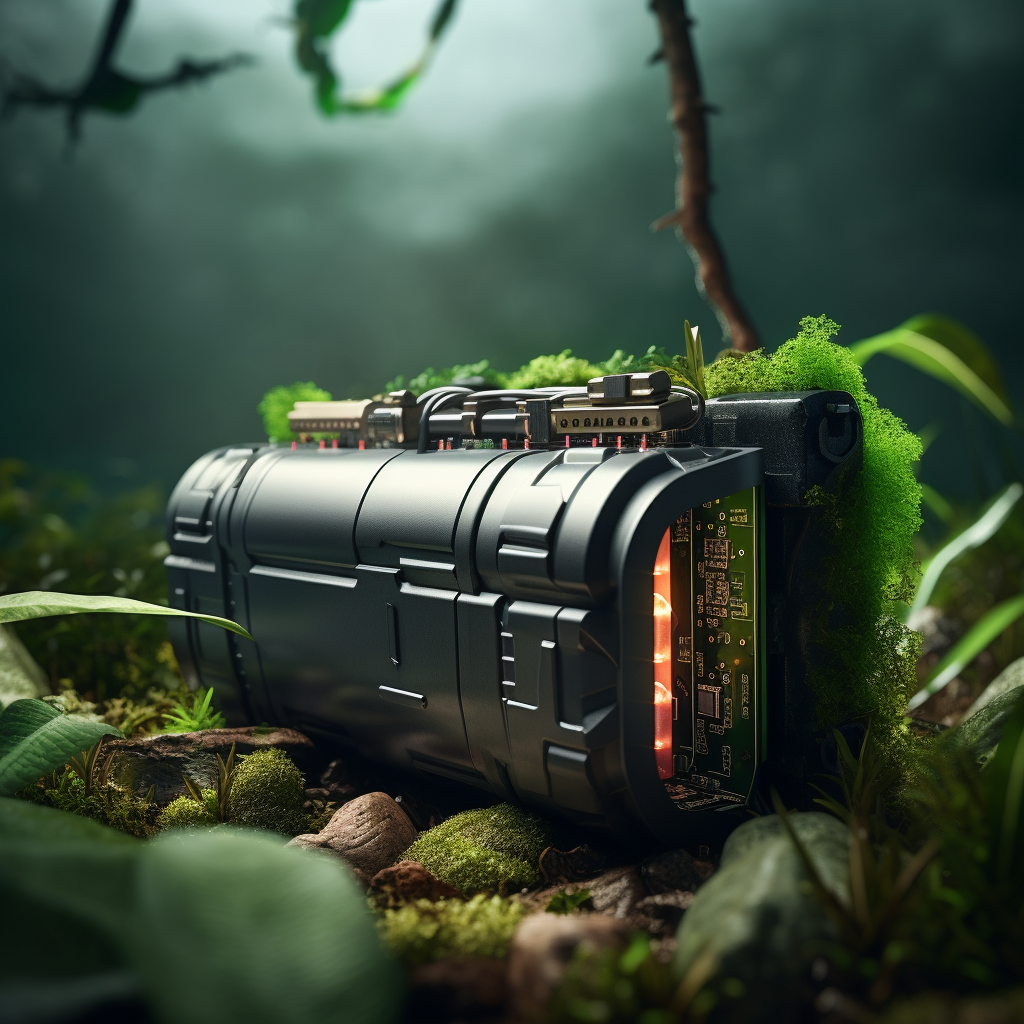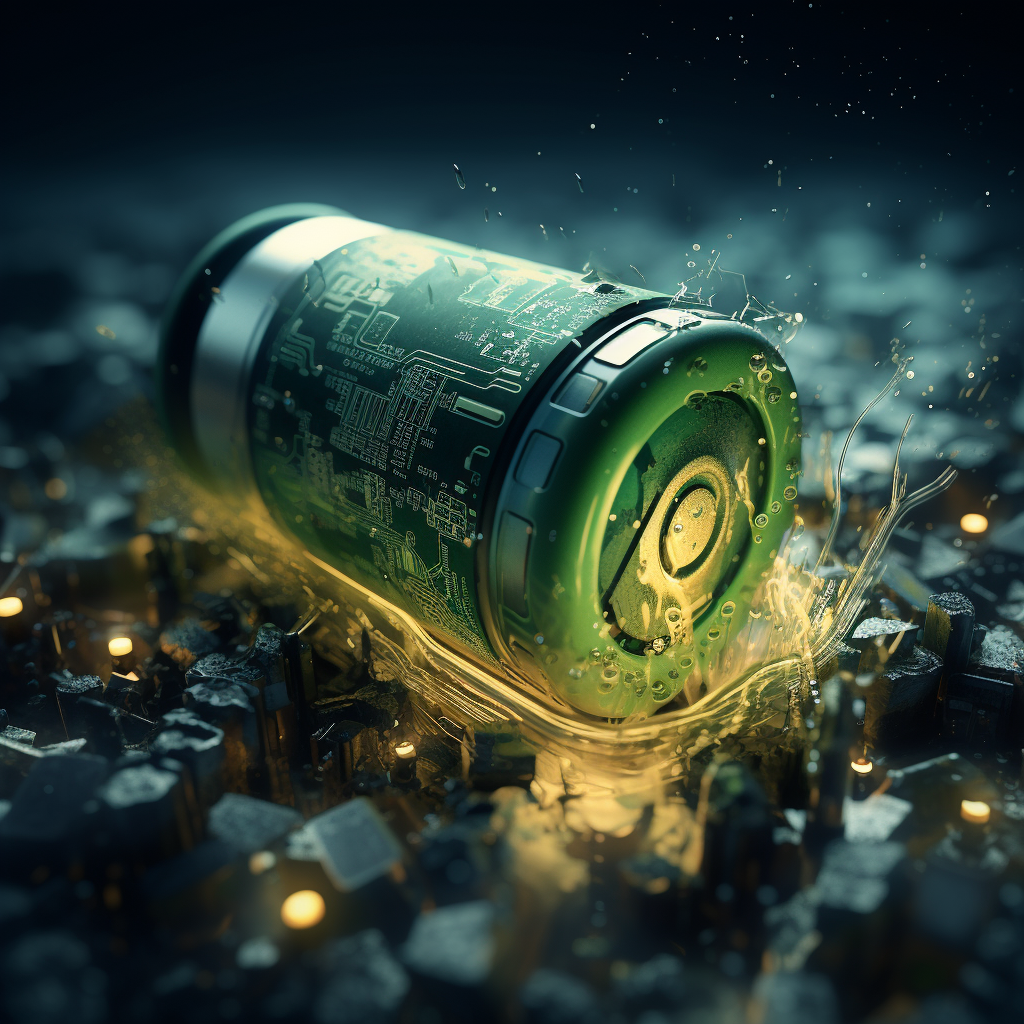Contents
- 1 Overview of Li-ion Batteries
- 2 Sustainability Challenges in Li-ion Battery Production
- 3 Role of Binders in Li-ion Batteries
- 4 Latex Binders as a Sustainable Option
- 5 Properties and Advantages of Latex Binders
- 6 Manufacturing Li-ion Batteries with Latex Binders
- 7 Performance of Latex-Based Li-ion Batteries
- 8 Future Research Directions
- 9 FAQs
Lithium-ion (Li-ion) batteries have become the dominant battery technology for portable electronics, electric vehicles, and energy storage systems. However, concerns around the sustainability and environmental impact of traditional Li-ion battery production have grown. One area of focus is replacing the non-aqueous binders typically used in battery electrodes with more sustainable options like latex polymer binders.
Binders play a critical role in holding the active battery materials together while allowing lithium ion transport. Conventional Li-ion batteries use polyvinylidene fluoride (PVDF)-based binders which rely on environmentally harmful solvents. In contrast, latex binders use water as the solvent and can be based on renewable materials.
This article will provide an overview of Li-ion battery components and the role of the binder. It will discuss the motivation for developing more sustainable binders and introduce latex binders as a promising option. The properties and production advantages of latex binders will be reviewed. Finally, the performance of latex binders in prototype Li-ion batteries will be examined along with future research needs. The goal is to provide a comprehensive look at the promise and remaining challenges of implementing latex polymer binders in Li-ion battery manufacturing.
Overview of Li-ion Batteries
A typical Li-ion battery consists of a graphite anode, a lithium metal oxide cathode, an electrolyte, and a separator membrane. The electrodes are composed of active materials like graphite or lithium cobalt oxide along with conductive additives like carbon black and a polymer binder.
During discharge, lithium ions flow from the anode to the cathode through the electrolyte and separator. The electrons travel along the external circuit, producing electric current. This process is reversed during charging. The binder holds the electrode materials together and provides adhesion to the current collector foils.
Polyvinylidene fluoride (PVDF) is the predominant binder used in Li-ion batteries today. PVDF is a fluoropolymer that offers good electrochemical stability and binds strongly to graphite anodes. However, PVDF relies on the use of toxic solvents like N-methyl-2-pyrrolidone (NMP) during electrode fabrication.

Sustainability Challenges in Li-ion Battery Production
The rapid growth in Li-ion battery demand for electric vehicles and energy storage has increased scrutiny of the sustainability impacts of their production. Large amounts of raw materials, energy, water and chemicals are used to manufacture Li-ion batteries.
Most concerning is the use of hazardous chemicals like NMP, which is difficult to recycle and can pollute groundwater. NMP is damaging to human health and linked to numerous negative environmental impacts. The high global warming potential of greenhouse gas emissions from battery production is also unsustainable long-term.
There is a push within the industry to find greener chemistries and technologies to improve the sustainability of Li-ion batteries across their lifecycle. Replacing NMP-based electrode binders with more environmentally friendly alternatives is one priority area.
Role of Binders in Li-ion Batteries
Binders play several crucial roles in Li-ion battery electrodes:
- Adhesion – Binders glue active materials like graphite powder onto the metallic current collector foils, providing good electrical contact.
- Cohesion – The binder holds active material particles together in a cohesive network, maintaining electrode structural integrity.
- Ionic conductivity – The binder allows diffusion of lithium ions through the electrode for charge/discharge.
- Electronic conductivity – The binder phase facilitates electron transfer within the electrode structure.
- Stability – Binders promote chemical and mechanical stability of electrodes during cycling.
- Processability – Binders allow electrode slurries to be coated uniformly onto foils.
The ideal binder offers a balance of these properties at an affordable cost. Conventional PVDF binders perform quite well overall but fall short on sustainability metrics.
Latex Binders as a Sustainable Option
Natural latex polymers derived from the Hevea brasiliensis rubber tree are a promising alternative binder for Li-ion batteries. Latex binders can match or improve upon PVDF performance in many regards while avoiding toxic solvents like NMP.
Latexes consist of nano-sized polyisoprene particles suspended in water. This aqueous nature gives latex binders a major sustainability advantage over PVDF. Latex is also renewable, biodegradable and non-toxic.
Latex binders are applied using water-based electrode coating processes. This eliminates exposure to hazardous organic solvents in binder and electrode preparation. Water-based manufacturing is much more environmentally benign.
The renewable natural rubber polymer backbone of latex binders provides similar mechanical properties, oxidative stability and electrochemical performance as PVDF. Latex is also flexible and stretchable, facilitating battery cycling.
Initial research shows latex binders can be paired with standard Li-ion battery anode materials like graphite, silicon and lithium titanium oxide. They can also be combined with various cathode chemistries, offering versatility.
Properties and Advantages of Latex Binders
Latex polymer binders have an array of useful properties that make them well suited as a sustainable alternative for Li-ion battery electrodes:
- Renewable and biodegradable – derived from Hevea tree
- Water-based processing avoids toxic solvents like NMP
- Highly stretchable and flexible
- Good adhesion to active materials and current collectors
- Ionic conductivity comparable to PVDF polymers
- Electrochemical stability in battery cycling environments
- Resistance to swelling in electrolyte solvents
- Ability to disperse conductive additives like carbon black
- Environmentally benign life cycle assessment metrics
- Lower greenhouse gas emissions than PVDF
- Cost competitive with conventional binders
- Easy to manufacture and handle in water-based processes
Manufacturing Li-ion Batteries with Latex Binders
Implementing latex binders in Li-ion battery manufacturing requires adapting the electrode and cell production processes:
- Anode/Cathode Mixing – Latex binder is blended with active material, carbon black, and other additives in water rather than NMP
- Coating – Aqueous electrode slurry is applied to metal foils by slot die, doctor blade or gravure techniques
- Drying – Electrode coatings are oven-dried to evaporate water instead of NMP
- Calendaring – Dense electrodes sheets are formed by rolling/pressing
- Slitting – Electrodes are cut into desired dimensions
- Cell Assembly – Latex-based electrodes are stacked with electrolyte and separator
- Formation – Finished Li-ion cells are cycled to activate materials
The switch to water-based processes requires specialized drying ovens, coating equipment, and heating systems. But it enables a more sustainable, safer work environment.
Performance of Latex-Based Li-ion Batteries
Early research indicates the performance of Li-ion cells with latex binders can match or exceed those made using PVDF in key areas:
- Capacity retention – Latex enables comparable capacity during cycling. Total deliverable energy is maintained.
- Power capability – Cells achieve similar peak discharge power due to good interfacial binding.
- Cycle life – Latex binders demonstrate impressive cycling endurance over hundreds of cycles.
- Rate handling – Good rate performance is achieved with various electrode materials.
- Interfacial stability – Latex provides excellent adhesion between active materials and current collectors.
- Mechanical integrity – Latex electrodes exhibit cohesion and ductility to support lithiation strains.
- Ionic conductivity – Adequate lithium ion transport through electrode structure.
- Electronic conductivity – Suitable electron transfer within latex-bound electrodes.
- Manufacturability – Latex electrode slurries and layers have suitable processability.
While further optimization is needed, latex binders are a drop-in ready alternative to PVDF with comparable functionality.
Future Research Directions
Additional research can help fully develop latex polymer binders and improve Li-ion sustainability:
- Evaluating performance after thousands of realistic duty cycles
- Testing different natural latex formulations and synthesis routes
- Incorporating latex in next-generation battery chemistries
- Developing latex coating processes tailored to high-volume production
- Assessing impacts on battery safety risks
- Analyzing full life cycle sustainability benefits
- Exploring latex binder degradation mechanisms
- Modeling latex-electrode interfaces and failure modes
- Identifying optimal combinations of latex binder with electrode materials
- Comparing capabilities to other alternative binders
FAQs
What are the components of a lithium-ion battery?
The main components of a lithium-ion battery are the anode, cathode, electrolyte, separator, and binder. The anode and cathode contain active materials that participate in the electrochemical reactions. The binder acts as the glue to hold the electrode components together.
Why are binders important in lithium-ion batteries?
Binders provide several critical functions in lithium-ion battery electrodes like adhesion, electronic conductivity, mechanical stability, and allowing diffusion of lithium ions. The binder bridges between the active material particles and enables the electrodes to function properly.
What binders are typically used in lithium-ion batteries today?
The most common binder used in commercial lithium-ion batteries is polyvinylidene fluoride (PVDF). PVDF relies on toxic solvents like N-methyl-2-pyrrolidone (NMP) during electrode fabrication.
Why is NMP a problem for the sustainability of batteries?
NMP is a known reproductive toxin and toxic to aquatic life. It can persist in groundwater and contaminate soil. Exposure to NMP during battery manufacturing poses risks to human health and the environment. Reducing NMP use is a priority for improving battery sustainability.
How are latex binders more sustainable than conventional PVDF binders?
Latex binders are derived from renewable rubber trees rather than petroleum sources. They use water as the solvent instead of hazardous NMP. Latex binders are biodegradable and non-toxic. Overall, latex enables greener and safer battery production processes.
Do latex binders perform as well as PVDF binders in lithium-ion batteries?
Research shows that latex binders can match or exceed the performance of PVDF binders in terms of capacity, power, cycle life, rate handling, and other metrics. Latex provides comparable functionality as a drop-in replacement for PVDF.
How will the use of latex binders change lithium-ion battery manufacturing?
Implementing latex binders requires a transition to water-based electrode processing rather than using NMP solvent. This involves changes to the mixing, coating, drying, and assembly steps. Investments in new equipment optimized for water-based processes may be needed.
What are some future research needs for latex binders?
More research is needed on long-term cycling performance, optimizing latex formulations, evaluating safety, analyzing life cycle impacts, modeling interface interactions, and testing binder-electrode material combinations. This can help fully mature latex binder technology.
Can latex binders also improve future battery chemistries?
Yes, latex binders are a versatile platform that can potentially be applied not only to conventional lithium-ion batteries but also to emerging battery chemistries like lithium-sulfur and lithium metal anodes.


